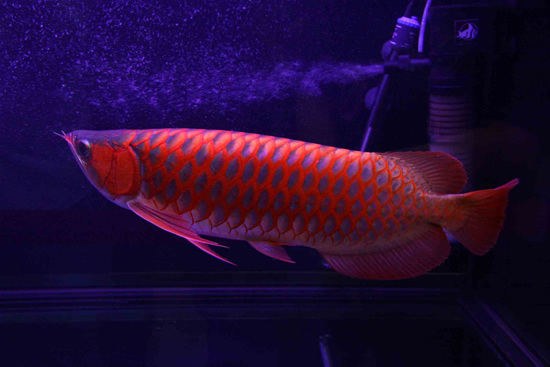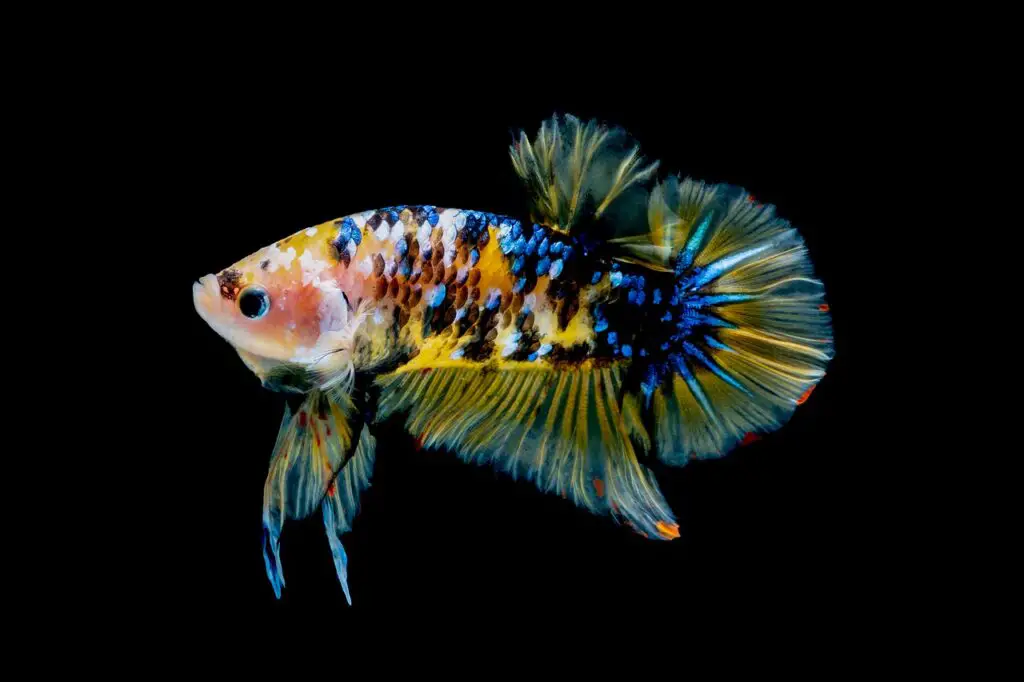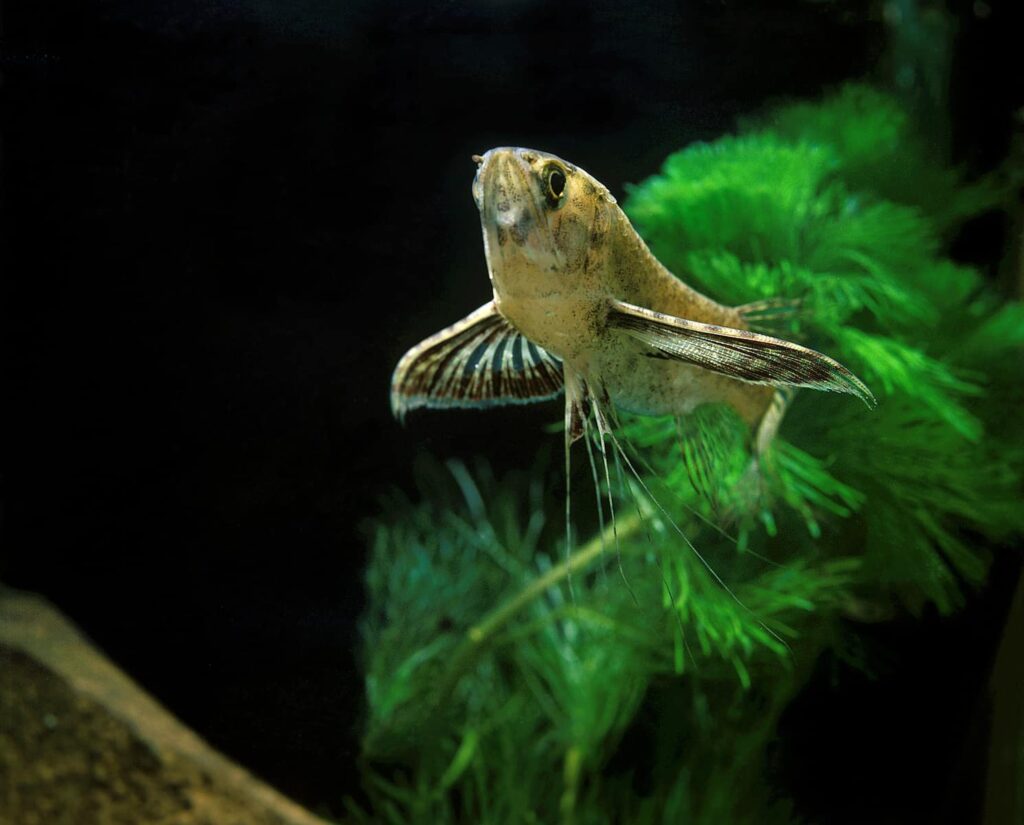With so many different types of fish out there, it’s hard to settle down on just the right fish for you, especially when you’re looking for centerpiece to finish off and accentuate your tank.
You’ve probably come across the red jardini arowana, a beautiful fish with boatloads of personality and a pretty good pouty lip to boot. If you’re looking into this iconic fish for your tank, there’s a lot you should know about them first.
Some species of arowana are illegal in the United States, so be sure you’re sourcing your fish properly.
If you want to own an arowana, you’ll need to prove with paperwork and certification that it was raised in the U.S. They grow up to 24 inches long in captivity and need a minimum tank size of 180 gallons.
There’s a lot to go into when looking after your red jardini arowana, including their lifespan, level of aggression, and ideal tankmates. The rest of this article will walk you through how to care for a red jardini arowana.
Jardini Arowana Guide
A jardini arowana is a tropical freshwater fish hailing from Australia and New Guinea. It is carnivorous and armed with spiky teeth for skewering and munching on prey.
This leaping fish is dubbed the water monkey for how often it jumps out of water, both when startled and when attacking prey. Jardinis can live up to an astounding 50 years, but in captivity, they will live 10-20 years.
They are, surprisingly, quite difficult to keep, requiring precise water temperature parameters and a stable pH level.
The temperature in your tank should be between 75 and 82 degrees Fahrenheit (24-24 degrees Celcuius), and the pH should be between 6.0 and 7.0, very slightly acidic.
Driftwood is a good way to help maintain the pH of the water. Water changes are a must, as with any other fish. You’ll need to do at least 15-20% once a week, depending on how effective your filter is.
They thrive best on a carnivorous diet high in protein, and hunting is a natural behavior for them. As such, the perfect food for a red jardini arowana is something it can hunt. Earthworms, crickets, frogs, shrimps, and crayfish.
A once a day feeding schedule is perfect for an adult jardini arowana, but juveniles may require two meals a day. Only feed them what they can chow down in one or two minutes―leftover food will decay and negatively impact the water parameters in your tank.
Jardini arowana have distinct personalities and are easily stressed, so if your arowana isn’t eating after being transitioned to his new tank, it’s probably just the stress of moving; however, sickness or too-frequent water changes can also cause a loss of appetite.
Vitamins found in the jardini arowana’s natural environment won’t be found in your tank, so they will need some form of vitamin supplements.
How Big Do Jardini Arowana Get?
Jardini arowana grow bigger when in their natural habitat, up to three feet in length. In captivity, however, they don’t have as much space to grow and will max out somewhere around two feet.
These fish love their space and need room to twist to turn around in their tank.
At minimum, you should have a 180-gallon tank for a single red jardini arowana. A wide, long tank is best for them since the jardini is a top dwelling fish and will utilize that space the most.
They are also big jumpers, so you’ll have to have a tight-fit or weighted lid so that they can’t jump out.
Yes, they will bash their head into the lid every now and again, but that’s better than sustaining more severe injuries by being outside the tank for too long. If your jardini outgrows its tank, then you’ll notice this frustrated head-bonking behavior more often.
Confined fish will feel threatened and develop an attitude, especially a rambunctious jardini; however, you don’t need to worry as much about creating plenty of hiding spaces for your jardini. They prefer to hang around at the top anyway.
Having a medium flow is ideal for jardinis since they enjoy swimming against the current, and the activity actually improves their digestion and metabolism.
Are Jardini Arowana Aggressive?
As carnivorous, predatory fish, jardini are well-known for their more aggressive nature. As always, it depends on the temperament of the individual fish, but most smaller fish are likely to become a snack or be hounded by your jardini.
Other species of arowana pose competition and most likely won’t be tolerated by your resident jardini. Some bottom feeders work well since they’re not imposing on the jardini’s top-of-the-world space.
Jardini Arowanas in Different Colors
Jardini arowanas come in a range of different colors, making them a beautiful and highly diversified species. They come in black, silver, gold, with a distinctive sheen on their scales. Some different species boast reds, oranges, and blues.
Some beautiful, mottled colors are present in a few species as well. Once again, dependent on where you live, these fish may be illegal and ownership of them can result in hefty fines and even jail time.
There are lots of scammers all across the internet for different arowanas, so be sure to source your fish both ethically and sensibly.
Final Thoughts
The red jardini arowana is a beautiful fish with recognizable features and a vibrant personality. Jardinis come in a range of colors and make a wonderful centerpiece for a tank.
They are solitary, predatory, and carnivorous, so be sure to cater to their natural hunting instincts with live food and provide the nutritional supplements they need in captivity.
Jardini are a lifelong friend, living up to 20 years in captivity and providing lots of entertainment. Just be sure you’re ready for the responsibility―these fish aren’t for beginners.
The hefty tank size requirements and sensitive nature of jardinis make care a challenge even for seasoned aquarists. If you’re bringing a jardini, be sure you’re prepared to tend to its needs so that it has a good quality of life.



